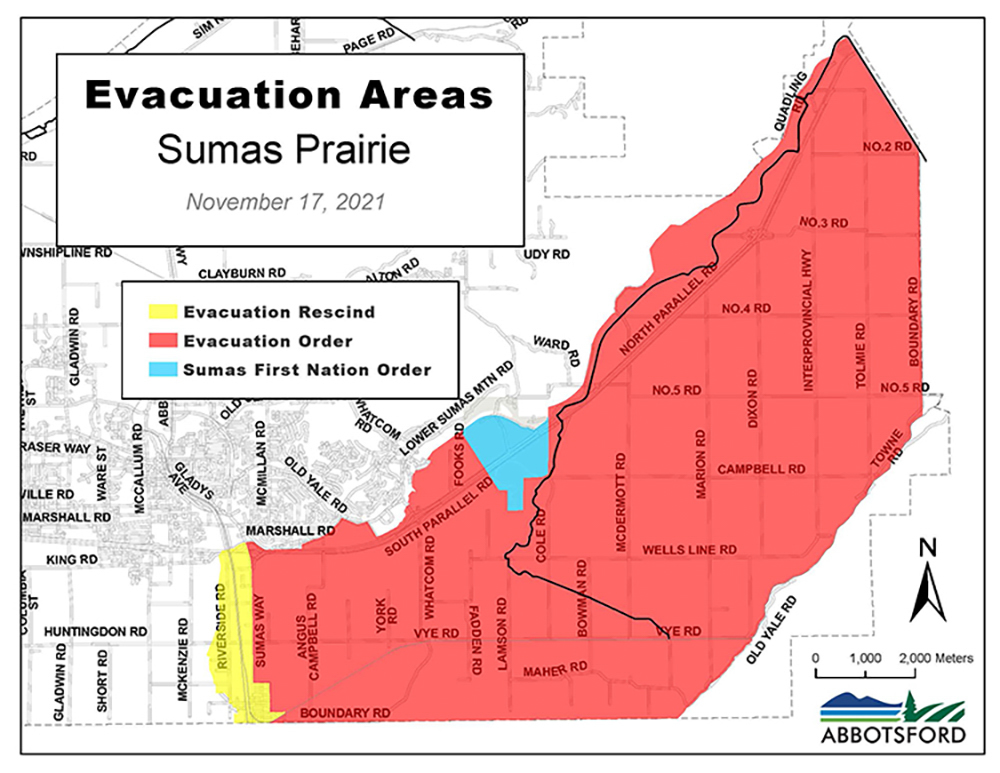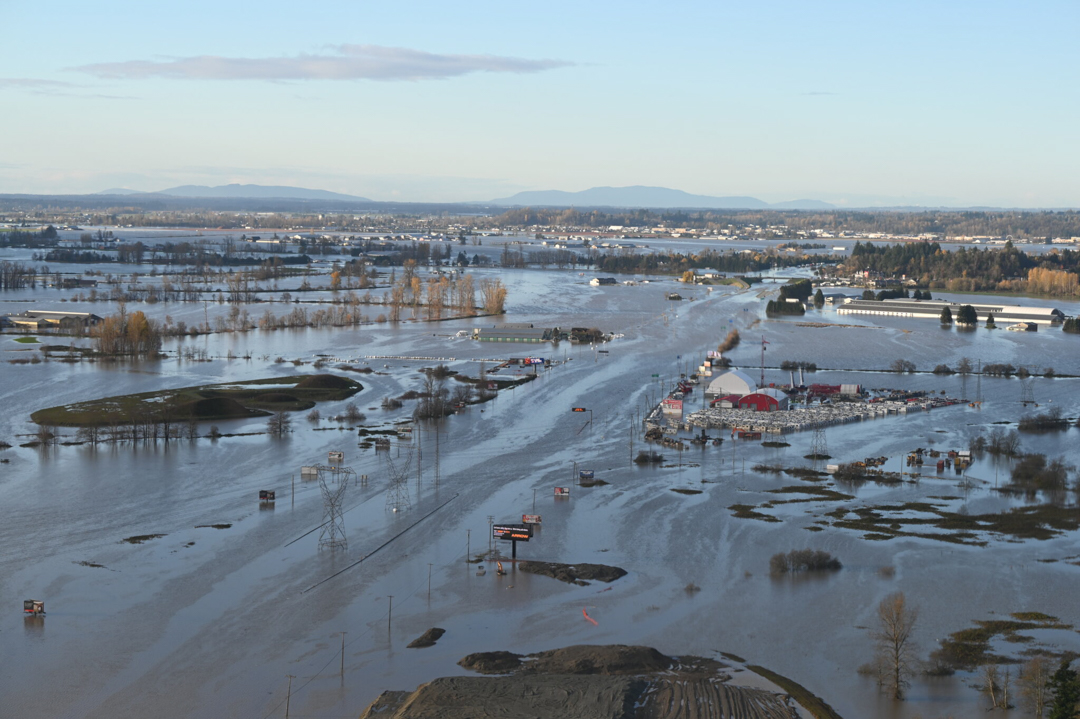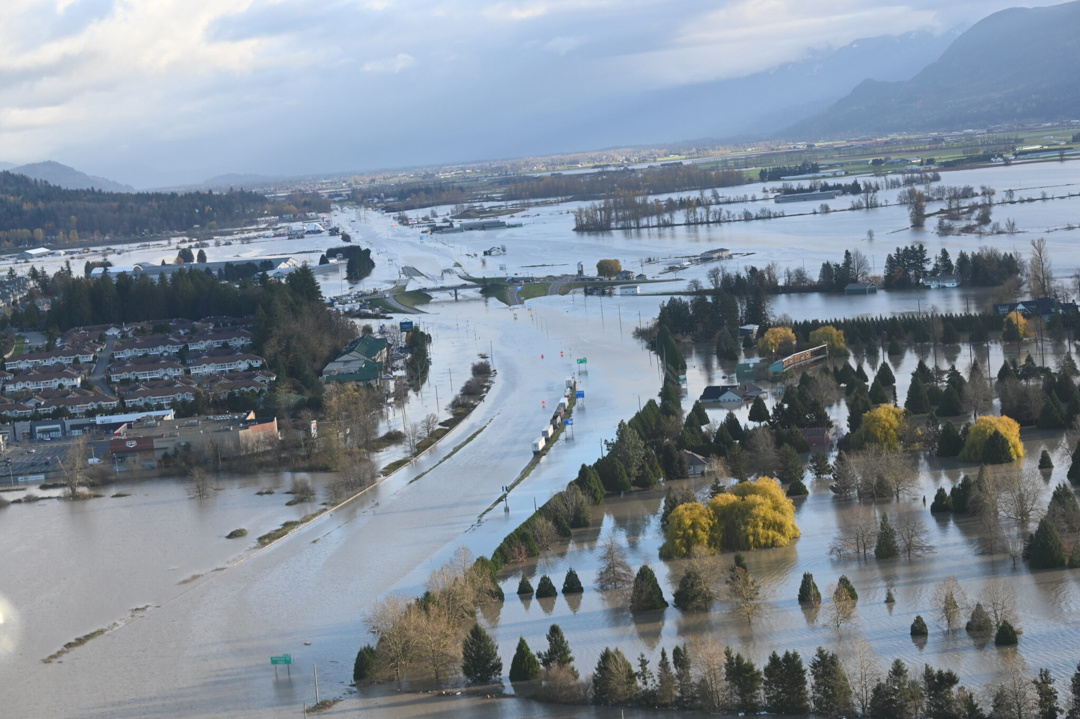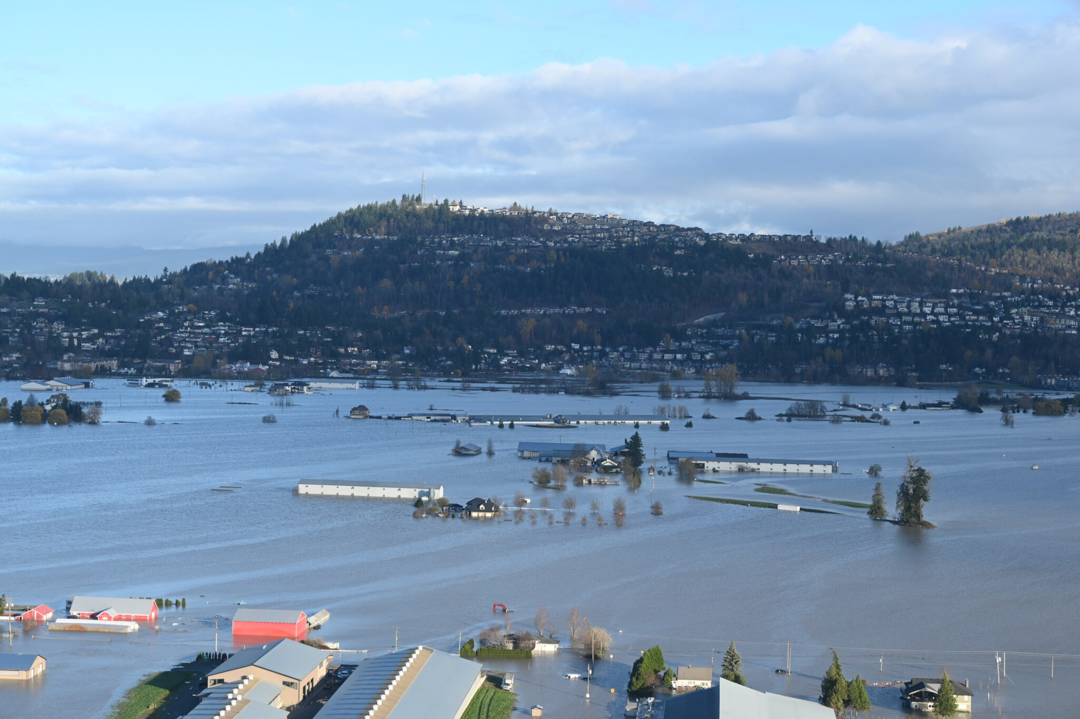By Andrea Sadowski & Chandy Dancey
Who had a torrential downpour of rain causing catastrophic results on their 2021 bingo card? Not us. The Fraser Valley received almost as much rain in a few days as what typically falls over the course of an entire month from a natural phenomenon known as an “atmospheric river.” By Wednesday, Nov. 17, the province had declared a state of emergency.
The flooding, mudslides, and rockslides caused more infrastructural damage than most of us in the Valley have seen in our lifetimes. Almost every highway in the region was shut down: Highway 11 going into Mission and the Sumas border, Lougheed Highway going to Maple Ridge, Highway 7 to Agassiz and Harisson, the Trans Canada Highway between Abbotsford and Chilliwack, and the Coquihalla Highway between Hope and Merritt were all completely or partially shut down, cutting off vital veins of transportation between the communities. More than 1,200 people were stranded in Hope. Over 100 members of the Canadian Armed Forces were deployed to help repair a dike before the next expected rainfall.

Abbotsford Mayor Henry Braun had a swift reaction, as he held a press conference on Monday, Nov. 15 immediately after the flooding followed by another press conference late Tuesday evening. He urged people living in the Sumas Prairie to evacuate immediately due to the impending failure of the Barrowtown Pump Station. This event was anticipated to be “catastrophic” and pose a “significant risk to life.” Approximately 600 people made it out safely, and another 184 residents had to be evacuated by boat or helicopter.
Braun urged all farmers to leave their birds and livestock behind and save themselves. Thousands of animals did not survive. The Sumas Prairie was once the great Sumas Lake, before it was drained in order to make way for prime agricultural land that would one day produce the province’s eggs, chicken, and dairy products. The Stó:lo and Semá:th people relied on this lake for their food, livelihoods and the health of their communities before colonizers drained it and sold it by the acre in the 1920s.

This shut-down of transportation routes and flooding of agricultural lands immediately spurred panic buying of groceries and gas, similar to the great toilet paper-hoard of early pandemic days. It completely cleared out store shelves in many large supermarkets throughout the region and drained gas pumps totally dry of fuel. This hoarding of food puts even more pressure on the food system, and leaves people at risk who don’t have the means to buy more than a week’s worth of groceries at a time.
Now, more than ever, community is crucial.
In order to help keep supply chains operating and roadways open for first responders and repair teams, inform yourself on which highways are open and to whom. As of writing this article, sections of Highway 1, 99, 7, and 3 are open only to essential travel. Essential travel means transporting essential personnel or supplies, evacuations, returning to your residence, or assisting at-risk people. This doesn’t include commuting to school or work, or going on day trips.
Avoid disaster tourism — meaning don’t travel to areas affected by the severe flooding or landslides just to see the devastation. The best case scenario is you’ll see what you wanted to see while also adding more traffic and delays on important roadways. The worst case scenario is you may get stuck or injured and end up requiring emergency services, taking up time, energy, and resources that could’ve been put to helping someone already in need. You can watch the news to keep up to date on the flooding in the comfort of your own home.

There doesn’t need to be a middleman in order to help our neighbours. If you’re safe from the floods and have a guest bedroom or couch to offer, connect with evacuees on social media to host them temporarily. Offer funds for those having to stay in hotels until they can return home. Post on your local community Facebook group with what you have to offer to those in need. There are a number of verified fundraisers on GoFundMe for affected families and areas of the Valley collecting funds to repair damages and rebuild lives. The United Way, Canadian Red Cross, and the B.C. SPCA have also set up donation hubs on their websites to go toward assisting vulnerable and displaced Canadians. The Abbotsford Disaster Relief Fund has also been jointly set up by UFV, the Abbotsford Chamber of Commerce, and the Abbotsford Community Foundation to provide essential services during this time.
If you don’t have funds, there are a number of local businesses and church groups collecting clothing, household supplies, and food to redistribute throughout the community. If you want to donate supplies, look to give toilet paper, toothbrushes, toothpaste, soap and bath items, blankets, coats, canned soup, and other non-perishable foods.
Hoarding isn’t inevitable during a disaster. We can choose to lean into our communities and offer to help our neighbours. Over 200 volunteers were responsible for saving the Barrowtown Pump Station. Volunteers at a Sikh temple in Surrey cooked over 3,000 meals for those displaced by flooding. While the disastrous floods have brought out the worst in some people, there’s also good out there that often gets overlooked, and we can choose to be a part of it.

Images: City of Abbotsford / November 2021


